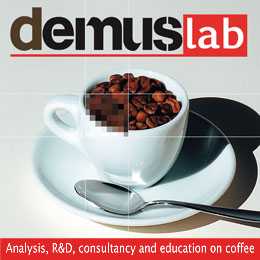ATLANTA, USA – The Coca-Cola Company today reported fourth quarter and full year 2024 results. “Our all-weather strategy is working, and we continue to demonstrate our ability to lead through dynamic external environments,” said James Quincey, Chairman and CEO of The Coca-Cola Company.
“Our global scale, coupled with local-market expertise and the unwavering dedication of our people and our system, uniquely position us to capture the vast opportunities ahead.”
Revenues: For the quarter, net revenues increased 6% to $11.5 billion, and organic revenues (non-GAAP) grew 14%, driven by 9% growth in price/mix and a 5% increase in concentrate sales. Concentrate sales were 3 points ahead of unit case volume, primarily driven by two additional days and the timing of concentrate shipments. For the full year, net revenues grew 3% to $47.1 billion, and organic revenues (non-GAAP) grew 12%, driven by 11% growth in price/mix and 2% growth in concentrate sales. Concentrate sales were 1 point ahead of unit case volume, primarily due to the timing of concentrate shipments.
Operating margin: For the quarter, operating margin was 23.5% versus 21.0% in the prior year, while comparable operating margin (non-GAAP) was 24.0% versus 23.1% in the prior year. For the full year, operating margin was 21.2% versus 24.7% in the prior year, while comparable operating margin (non-GAAP) was 30.0% versus 29.1% in the prior year. For both the quarter and the full year, operating margin performance included items impacting comparability, as well as currency headwinds. Full year operating margin included a charge of $3.1 billion related to the remeasurement of the contingent consideration liability to fair value in conjunction with the acquisition of fairlife, LLC (“fairlife”) in 2020. For both the quarter and the full year, comparable operating margin (non-GAAP) expansion was primarily driven by strong organic revenue (non-GAAP) growth and the impact of refranchising bottling operations, partially offset by higher input costs, higher operating expenses and currency headwinds.
Earnings per share: For the quarter, EPS grew 12% to $0.51, while comparable EPS (non-GAAP) grew 12% to $0.55. EPS performance included the impact of a 1-point currency headwind, while comparable EPS (non-GAAP) performance included the impact of an 11-point currency headwind. For the full year, EPS declined slightly to $2.46, while comparable EPS (non-GAAP) grew 7% to $2.88. EPS and comparable EPS (non-GAAP) performance both included the impact of a 9-point currency headwind.
Market share: For both the quarter and the full year, the company gained value share in total nonalcoholic ready-to-drink (“NARTD”) beverages.
Cash flow: For the full year, cash flow from operations and free cash flow (non-GAAP) were $6.8 billion and $4.7 billion, respectively. Both decreased versus the prior year, primarily due to a $6.0 billion deposit made to the U.S. Internal Revenue Service (“IRS”) related to ongoing tax litigation (“IRS tax litigation deposit”). Free cash flow excluding the IRS tax litigation deposit (non-GAAP) was $10.8 billion, an increase of $1.0 billion versus the prior year, largely due to strong business performance and working capital benefits, partially offset by higher other tax payments and higher capital expenditures.
Water, sports, coffee and tea grew 2% for the quarter and declined 1% for the full year, reports The Coca-Cola Company
Water grew 2% for the quarter and declined 2% for the full year. For the quarter, water performance was primarily driven by growth in Europe, Middle East and Africa, Latin America and Asia Pacific and, for the full year, growth in Latin America and Europe, Middle East and Africa was more than offset by a decline in Asia Pacific.
Sports drinks declined 2% for the quarter and 1% for the full year as growth in Europe, Middle East and Africa was more than offset by declines in North America and Asia Pacific.
Coffee declined 1% for the quarter and 3% for the full year, primarily due to the performance of Costa coffee in the United Kingdom. Tea grew 5% for the quarter and 4% for the full year. For the quarter, growth was driven by all geographic operating segments and, for the full year, growth was driven primarily by Asia Pacific and Europe, Middle East and Africa.















